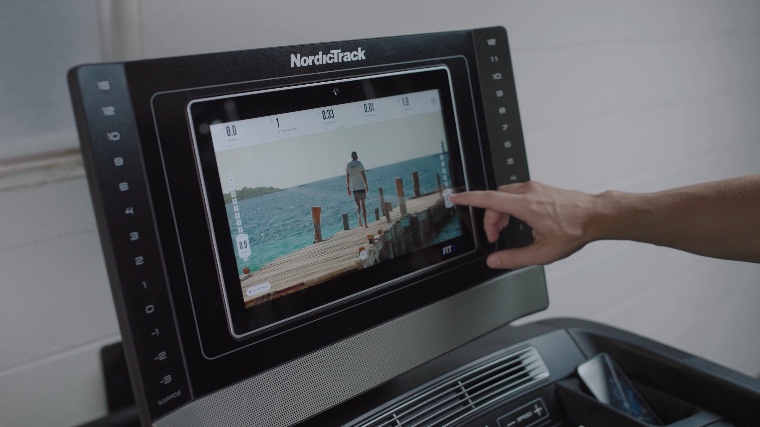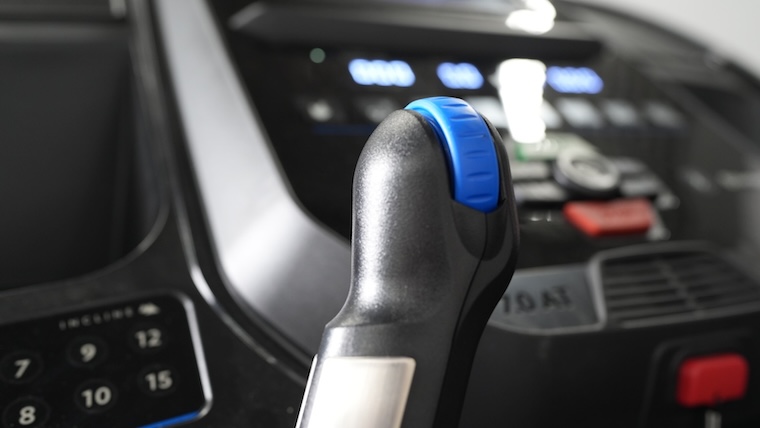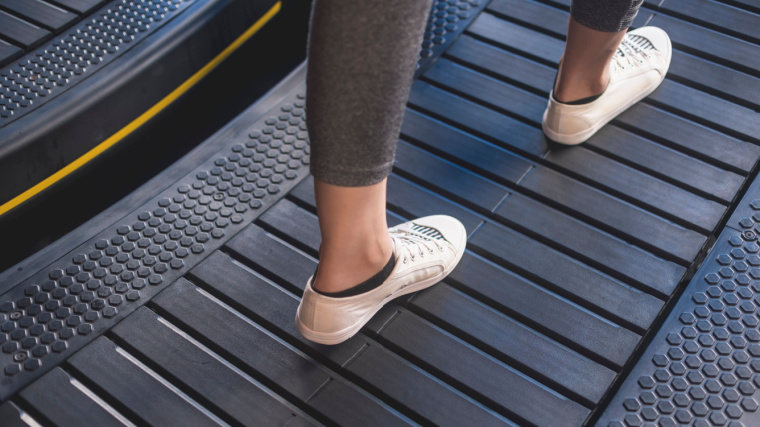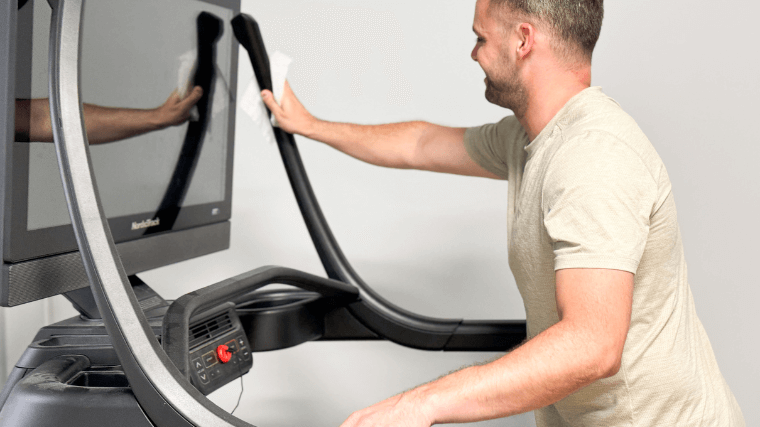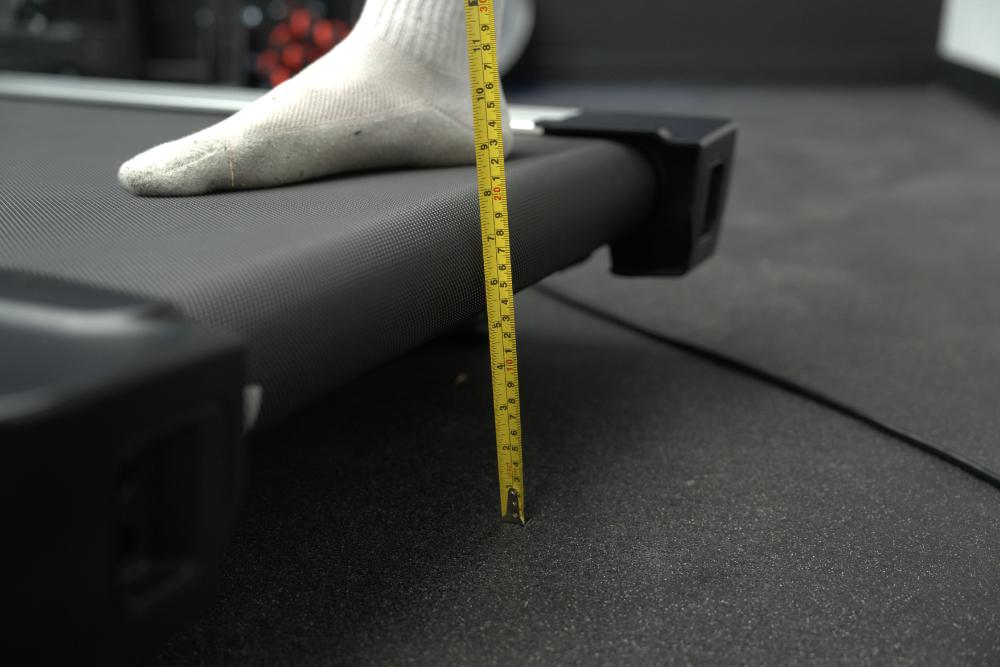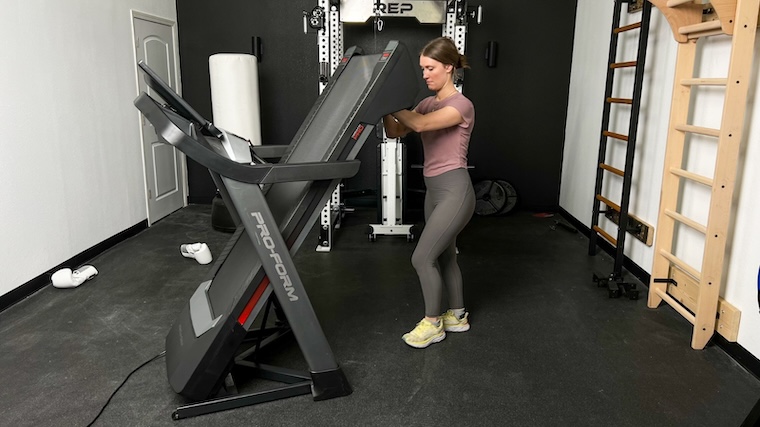Running can be an excellent form of fitness, but multiple factors — whether inclement weather, dimly-lit pathways, or a lack of traversable routes — can limit your outdoor training abilities in a hurry. The best treadmills for running allow you to keep the pace (pun intended) with powerful motors, durable frames, and tech-savvy consoles that can make every sweat an engaging one.
When separating a good treadmill for running apart from the other best treadmills on the market, you need to consider a few components. Namely, the motor capacity, top speeds, and incline ranges. To give you a leg up (we promise, we’ll stop … eventually) in your quest, our experts tested and researched over 40 treadmills to land on our favorite picks. Lace up those running shoes — here are our top picks for the best treadmills for running enthusiasts.
The 8 Best Treadmills for Running of 2025
- Best Overall Treadmill for Running: NordicTrack Commercial 1750
- Best Folding Treadmill for Running: Sole F80
- Best Budget Treadmill for Running: Horizon 7.0 AT
- Best Self-Powered Treadmill for Running: AssaultRunner Pro
- Best Incline Treadmill for Running: NordicTrack Commercial X32i
- Most Durable Treadmill for Running: Sole TT8
- Best Treadmill for Running and Streaming: ProForm Pro 9000
- Best Compact Treadmill for Running: Sunny Health & Fitness SF-T4400
Best Overall Treadmill for Running: NordicTrack Commercial 1750

The NordicTrack Commercial 1750 is made for the tech-loving runner. This high-tech treadmill features a touchscreen monitor that can tilt and rotate, and offers automatic incline, decline, and speed adjustments based on the workout you choose.
Specs
- Price: $2,499
- Max Incline: 12%
- Max Decline: -3%
- Max Speed: 12mph
- Motor Size: 3.5 CHP Motor
- Weight Capacity: 300lbs
- Product Dimensions: 80” L x 38” W x 65” H
- Display Size: 14”
- Warranty: 10-Year Frame, 2-Year Parts, 1-Year Labor
Looking to make your indoor runs as engaging as your outdoor sessions? The NordicTrack Commercial 1750 is our top pick for runners thanks to its powerful 3.5 continuous horsepower (CHP) motor that can sustain high speeds for longer durations. Reports indicate that runners should target treadmills with 3.0 CHP motors or more, since their added power can better support regular running speeds at longer intervals. (1)
Kate Meier, BarBend editorial member and NASM-Certified Personal Trainer, also favors this NordicTrack treadmill for its sturdiness at varying speeds, rating it 5 out of 5 for durability. “I didn’t experience any wobbliness or shakes when cranking this treadmill up to max speeds,” she says. “The entire machine is plenty sturdy.” This is a solid contrast to the best walking treadmills, which may start to tremble at higher speeds.
Another key feature of this Commercial 1750 is its compatibility with IFIT. The digital service can be streamed across the treadmill’s 14-inch HD touchscreen, unlocking new and exciting classes, roadways, and programs every time you hop on for a workout. Plus, the AutoAdjust technology keeps you in stride with your instructors without any fuss or hassle — during sessions, the Commercial 1750 can automatically adjust your speed and incline with your instructor’s callouts. For these reasons, we rate the workout experience a 5 out of 5.
The IFIT platform also has workouts and classes for off-treadmill workouts, too, which you can partake in thanks to the Commercial 1750’s swiveling display console. For more information on the service, be sure to read our full IFIT review.
We also appreciate how the Commercial 1750 features a folding deck that allows for easier storage. As convenient as this SpaceSaver folding tech is, though, we still give this NordicTrack profile a 3.5 out of 5 for its footprint. While in use, this treadmill takes up 21.11 square feet of space, according to our measurements, which can quickly consume a small training room.
The spatial requirements also make housing the treadmill more of a hassle when taking the Commercial 1750’s warranty into consideration. According to the fine print, the 10-year frame, 2-year parts, and 1-year labor coverage is voided if you store this treadmill in a garage. Still, though, if you have the available space — and can afford the near-$2,500 price tag — this is a great solution to keeping your running goals in-check year-round.
Read our full NordicTrack Commercial 1750 Treadmill Review.
Best Folding Treadmill for Running: Sole F80

The Sole F80 treadmill is full of modern touches. It can withstand long runs, offers an incline range up to 15 percent and speed range up to 12 mph, and has a cushioned deck that makes running 40 percent less impactful on your joints than the outdoors.
Specs
- Price: $1,899.99
- Max Incline: 15%
- Max Decline: 0%
- Max Speed: 12mph
- Motor Size: 3.5 HP
- Weight Capacity: 350lbs
- Product Dimensions: 82.5″ L x 38″ W x 66″ H
- Display Size: 10.1”
- Warranty: Lifetime Frame, Lifetime Motor, 3-Year Deck, 3-Year Parts, 3-Year Wear Items, 1-Year Labor, 90-Day Cosmetic Items
The best folding treadmills can be ideal for runners looking to bring their fitness indoors without sacrificing an entire floor plan in the process. Capable of shrinking down to just 11.61 square feet — a 10.16 square-foot difference from its operating footprint — the Sole F80 is our recommended machine for runners desiring a folding treadmill for home use.
While this isn’t the only profile we’ve tested featuring a folding design, we do hold this machine in higher regard thanks to its sturdy, simple-to-use release lever. The integrated gas shock also lowers the deck safely when you want to set up for a session, which can be a saving grace for your fingers and toes.
We do rate this Sole treadmill at 3.75 when it comes to its footprint and portability, though, due to its heavy 278-pound frame. According to our tester, a CrossFit Level 1 instructor, “I’d recommend having a moving company or extra set of hands at the ready when getting this machine into position. Carrying this behemoth up a flight of stairs can be quite the workout in itself.”
In terms of the workout experience, we liked the build quality and available conveniences of the F80, giving it a 4.5 out of 5 for the category. The 10.1-inch Android-powered touchscreen is compatible with streaming services like Netflix and ESPN, and it boasts mirroring capabilities, meaning you can play an app from your phone on the screen. And when you need to use the screen itself, our testing with a force meter reveals that you only need to apply about 5 pounds of pressure, which means it’s responsive, but not too sensitive to the slightest touch.
The F80 also boasts a Cushion Flex Whisper Deck, which can reduce impact felt across your joints by up to 40%, according to the brand. While we appreciate the inclusion of a cushioned deck — it does help keep operations quiet, too — our tester states that the 40-percent reduction may be more marketing-based than factual. “I didn’t experience any jarring sensations or discomfort while running, but it wasn’t a supremely plush sensation underfoot,” they said.
We also appreciate the wider 22-inch by 60-inch running surface of this treadmill, as it can better support your running biomechanics. Studies show that your running stride showcases longer joint range of motion than, say, your walking gait, meaning the extra width — 2 inches more than the typical 20-inch running deck width of other treadmills — can be ideal for arm swings, while the longer track can facilitate lengthier strides. (2)
Unfortunately, though, the running experience with this treadmill has its limits. Yes, you can adjust the incline settings up to 15%, which is on par with other top treadmills, but there are no decline settings available.
Read our full Sole F80 Treadmill Review.
Best Budget Treadmill for Running: Horizon 7.0 AT

The Horizon 7.0 AT Treadmill is a durable, low-cost option for anyone looking for a quality treadmill without overspending. It features a strong motor, a wide range of speed and incline settings, and a unique three-zone cushion system.
Specs
- Price: $999
- Max Incline: 15%
- Max Decline: 0%
- Max Speed: 12mph
- Motor Size: 500lb Thrust Incline Motor
- Weight Capacity: 325lbs
- Product Dimensions: 76″ L x 35″ W x 66″ H
- Display Size: 7.25”
- Warranty: Lifetime Frame, Lifetime Motor, 3-Year Parts, 1-Year Labor
In our research, we’ve found that home treadmills for running tend to be more expensive than other options, typically ranging in price between $2,000 and $4,000. Despite this pricey trend, though, there are still affordable options that can support sprinters, including the 7.0 AT from Horizon Fitness. Coming in at $999, this treadmill is one of the most approachable profiles with running-specific qualities, such as a powerful motor, incline settings, and a spacious 20-inch by 60-inch running deck.
In testing, we rated this budget-friendly running treadmill at 4 out of 5 for adjustability, mostly due to the Quick Dial controls at the front of the console. Rather than pushing buttons continuously to toggle through the speed and incline ranges, this treadmill uses pinwheel knobs for quick, on-the-fly toggles. As a result, this can be an excellent treadmill for sprint intervals, as there’s little delay between speed changes.
Now, to achieve this affordable price point in line with the other best budget treadmills, you do need to give up some luxuries, like a large touchscreen display or library of interactive training programs. There’s no touchscreen built into the center console, meaning you can’t stream your favorite workouts directly through the machine. Additionally, the LCD display measures 7.25 inches, which may be too small for athletes wanting a digestible look at their data.
The 7.0 AT does have preset programs — Calorie, Manual Mode, Target Heart Rate, Hill Climb, Fat Burn, My First 5K, Distance — but they’re not as engaging as workouts you’d see in other devices.
Not all is lost, though. We rated our workout experience with the 7.0 AT a 4.5 out of 5, with our tester noting a sturdy frame that didn’t jostle or shake during sessions and the ample room for long strides provided by the 60-inch running deck.
Plus, despite its limited tech, you can still stream your favorite workouts when training on the 7.0 AT (albeit, with a little ingenuity). There is a tablet holder, and according to our tester, a CrossFit Level 1 instructor, “This treadmill does have Bluetooth connectivity, so I could sync my training sessions from Zwift and Peloton without any issues. The speakers are also bold enough for clear instruction, and the included tablet holder did a nice job of staying put throughout my paces.”
Read our full Horizon 7.0 AT Treadmill Review.
Best Self-Powered Treadmill for Running: AssaultRunner Pro

The AssaultRunner Pro is a durable, motorless treadmill that can be great for athletes wanting full control of their training intensity. The durable frame boasts a 350-pound weight capacity, and the included display console is easy to read, albeit simpler in nature.
Specs
- Price: $2,999
- Max Incline: N/A
- Max Decline: N/A
- Max Speed: Unlimited
- Motor Size: N/A
- Weight Capacity: 350lbs
- Product Dimensions: 69.7” L x 33.1” W x 64” H
- Display Size: N/A
- Warranty: 5-Year Frame, 3-Year Moving Parts
Looking for a treadmill to keep your running workouts going all year, yet don’t have an outlet to spare to power the motor? The AssaultRunner Pro requires zero electricity, so you’re in total control of how fast the belt moves. Our expert reviewer Amanda Capritto noted how this manual treadmill can promote good form. “As an on-and-off CrossFitter, I’ve spent my fair share of time on the AssaultRunner Pro. I love how the [it] encourages me to maintain good running form and feels more like running outdoors, but brings all the benefits of running indoors.”
Additionally, running on a manual treadmill can be even more of a workout than sessions atop a motorized model. Studies indicate that running on a self-powered treadmill can lead to higher caloric burn than running the same distance and speed on a motorized unit. (3)
According to our tester, a CrossFit Level 1 instructor, there is some skill involved when getting the slatted belt to revolve, so don’t expect to step right into a workout. “I recommend starting at a walking pace to get a feel for where your foot strike lands and how that moves the belt,” they noted. “From there, you can begin to find your groove and pace at whatever speed you prefer.”
Additionally, we rated the AssaultRunner Pro a 4 out of 5 for the included technology across the front console. While you won’t find a large display capable of streaming your favorite programs and shows, the on-unit module does a great job of giving you accurate readings in a number of categories. Even when training under direct sunlight, we were able to track our distance, speed, calories, time, and watts throughout our workouts.
We also appreciate this AssaultRunner Pro because it’s surprisingly portable, rating it a 4.4 out of 5 for the category. After all, you don’t need to have access to an outlet to power the machine, so you’re capable of rolling the entire unit out into your driveway for some under-the-sun training. The hefty 280-pound weight of this treadmill may be a challenge for some, but the option is there, nonetheless.
Finally, the AssaultRunner Pro is plenty durable for extended use, which stems from its sturdy steel frame and corrosion-resistant hardware. That said, though, assembling the machine itself can take some doing out of the box.
We rate the entire assembly process a 3.5 out of 5 because we found that it’s a multi-person job. Some of the components, like the sturdy handrails, can be cumbersome to hold in place when tightening bolts and fixtures. We recommend scheduling an afternoon with a training buddy or spouse to get this impressive manual treadmill up and running (pun intended).
Read our full AssaultRunner Pro Treadmill Review.
Best Incline Treadmill for Running: NordicTrack Commercial X32i

If you’re looking to train inclines, the Commercial X32i should definitely be on your radar thanks to its impressive -6 to 40 percent pitch range. This behemoth of a treadmill also boasts a large 32-inch HD touchscreen, perfect for following along to your favorite iFit workouts.
Specs
- Price: $4,499
- Max Incline: 40%
- Max Decline: -6%
- Max Speed: 12mph
- Motor Size: 4.25 CHP DurX Commercial Plus Motor
- Weight Capacity: 300lbs
- Product Dimensions: 76.5” L x 40” W x 73” H
- Display Size: 32”
- Warranty: 10-Year Frame, 2-Year Parts, 1-Year Labor
For athletes wanting a new challenge in their daily runs, pacing at an incline has been shown to have a positive effect on VO2max and training intensity. (4) While you can find treadmills offering some incline settings, there are few that match the range of the Commercial X32i from NordicTrack. This burly machine can reach inclines as high as 40 percent and declines as low as -6 percent to really diversify your training, making this one of the best incline treadmills out there.
Aside from its impressive pitch range, the X32i is also a fantastic pick for runners thanks to its durable construction, which we rated a 5 out of 5. “This thing is an absolute tank,” said our tester, a certified personal trainer. “I didn’t feel an ounce of shakiness when sprinting, which I attribute to the well-cushioned running deck. The screen does jostle a little when going all out, but I feel that’s mostly due to its size in comparison to the rest of the machine.”
We do recommend having a helping hand when getting this machine set up in your home. There are multiple cumbersome parts that need to be stabilized during wiring steps or when adding bolts. Also, our tester said that the machine, which weighs a whopping 462 pounds, is near-immovable if you’re going about the process solo.
In terms of the display, this treadmill comes equipped with a massive 32-inch HD touchscreen console that gives off that “personal movie theater” vibe. The screen makes it easy to tune into your favorite live and on-demand fitness classes through the IFIT platform without feeling too overbearing.
The IFIT compatibility also gives you access to NordicTrack’s AutoAdjust technology, a feature that played heavily into our 4.5 out of 5 rating for workout experience. Rather than smashing buttons to achieve those high pitches or max speeds, this treadmill automatically changes speed and incline in step with your onscreen instructor.
Naturally, however, all this workout performance does come at a price — and a steep one. The Commercial X32i costs nearly $4,500, which is higher than many other quality treadmills for runners, which commonly come in between $2,000 and $3,000. Also, this treadmill’s deck doesn’t fold up for easier storage, earning it a 2 out of 5 in terms of its footprint.
If you can fit this machine in your budget (and your physical training space), though, we think it earns its high price point.
Read our full NordicTrack Commercial X32i Treadmill Review.
Most Durable Treadmill for Running: Sole TT8

This heavy-duty treadmill features a steel framework with a 4.0 HP motor and a weight limit of 400 pounds. The three-inch rollers are ideal for runners, and the combination of incline and decline settings allows for hill work.
Specs
- Price: $2,699.99
- Max Incline: 15%
- Max Decline: -6%
- Max Speed: 12mph
- Motor Size: 4.0 HP
- Weight Capacity: 400lbs
- Product Dimensions: 82.5″ L x 38″ W x 66″ H
- Display Size: 15.6”
- Warranty: Lifetime Frame, Lifetime Motor, 3-Year Deck, 3-Year Parts, 3-Year Wear Items, 1-Year Labor, 90-Day Cosmetic Items
There’s no sugar-coating it — the best high-end treadmills, and even some of the regular ones, are expensive pieces of home workout equipment. If you’re using your machine for daily runs and all-out sprints, you’ll want a machine capable of withstanding the rigors of training long into the future. Thanks to its reinforced framework, impressive 400-pound weight capacity, 4-horsepower motor, and 10-pound flywheel, we feel the Sole TT8 is one of the most durable treadmills for runners today.
The treadmill’s 5 out of 5 durability rating also stretches to the center console. Our tester, a certified personal trainer, said, “I like how a majority of the controls are manual buttons on the console for a more reliable makeup. Yes, there’s a touchscreen for tracking workouts, but a majority of the toggles are more utilitarian.”
All that durability takes some time to get set up, though — roughly two to three hours, according to our tester. We found the instructions easy to read and thorough, but given the weight and complexity of the build, it’s best to have the free time available (as well as a helping set of hands nearby).
We rated the ergonomics and performance a 4.5 out of 5. Our tester noticed no wobbliness or shaking during strides, and the motor continued to run smoothly across all the available speeds, inclines, and declines. “You do need to be mindful of the front motor hood, though,” our tester noted. “It’s tall enough that if you have a long forward stride, you might hit it with your foot. I’d recommend running a little further back on the treadmill belt to avoid any potential interference.”
This Sole treadmill also earned a 5 out of 5 for its warranty package, which offers lifetime support for the frame and motor. Additionally, Sole offers 3-year coverage for the deck, parts, and wear items, as well as 1-year coverage for labor and 90-day support for cosmetic items.
The Sole TT8 is not the best option for runners in tight living spaces. It sprawls across 21.77 square feet, and there’s no folding mechanism for easier storage. If you desire a dedicated machine to support your rigorous training schedule for years to come, though, this is certainly worth your consideration.
Read our full Sole TT8 Treadmill Review.
Best Treadmill for Running and Streaming: ProForm Pro 9000

If you’re looking for a high-tech tread for your home that can fold up when not in use, the ProForm Pro 9000 is a great option with a 22-inch touchscreen display and automatic incline and speed adjustments. The 60-inch running deck ca incline from -3 to 12 percent for a variety of running and hiking workouts.
Specs
- Price: $2,299
- Max Incline: 12%
- Max Decline: -3%
- Max Speed: 12mph
- Motor Size: 3.6 CHP Mach Z
- Weight Capacity: 300lbs
- Product Dimensions: 77.3” L x 35.3” W x 59.6” H
- Display Size: 22”
- Warranty: 10-Year Frame, 2-Year Parts, 1-Year Labor
Pros
- The 22-inch touchscreen provides an excellent picture and marries nicely with the treadmill’s IFIT compatibility.
- During classes, IFIT’s AutoAdjust technology automatically adjusts speed and incline to a trainer’s specifications.
- Our tester appreciated the abundance of storage and safety stop button.
Cons
- According to our tester, the WiFi connection can be spotty at times, which may influence where you house this treadmill.
- Moving this treadmill, especially across carpeted floors, can be troublesome.
- Customer service is not the most helpful, according to our tester.
Running indoors doesn’t leave much to the imagination. After all, you’re pacing in the same location for long durations, which can begin to weigh on your enthusiasm for training. However, our expert reviewer says that, with iFIT’s library of more than 17,000 cardio, strength, and mobility classes streaming on the crystal-clear 22-inch touchscreen, you won’t be lacking for engaging workouts. “iFIT is some of the best interactive programming out there and really helps prevent boredom.” (Check out our full iFit review if you still need convincing.)
We’re big fans of IFIT’s assortment of studio classes and outdoor workouts led by professional trainers. For folks searching for the best smart treadmills, the connectivity to iFit programming is key. We did, however, dock the Pro 9000’s tech capabilities down to 4.5 out of 5, given our experience with actually connecting to the digital services.
Kate Meier, BarBend editorial member and NASM-Certified Personal Trainer, said, “This treadmill requires a stable, strong internet connection, which turned out to be an issue for me. I routinely struggled to connect the machine to my Wi-Fi network, so I’d make sure that your home internet connection is firing on all cylinders before going with this option.”
Despite the potential connection issues, there are still a good bit of conveniences across the center console. We rated this machine a 5 out of 5 for the category thanks to the abundance of storage compartments, as well as the integrated Bluetooth speakers and cooling fan. Meier also pointed out the inclusion of a safety stop button, which can be an excellent safety feature to have on hand while, say, tackling a top speed or pushing yourself past previous limits.
What isn’t convenient, however, is its portability, which we scored at 3.5 out of 5. The deck does fold for more convenient storage, and there are front wheels at the base, but according to Meier, they aren’t the most useful additions to the design. She noted that you slide the treadmill into position more so than roll it. Plus, when trying to get this treadmill across carpeted flooring, Meier noted that the front tends to grab the material and bunch up.
Read our full ProForm Pro 9000 Treadmill Review.
Best Compact Treadmill for Running: Sunny Health & Fitness SF-T4400
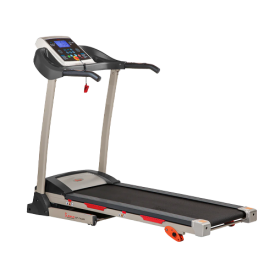
This foldable treadmill features a 2.20 peak HP drive system that provides speeds from 0.5 miles per hour to 9 miles per hour. The incline manually adjusts to three levels: 0%, 2%, or 4.37% incline.
Specs
- Price: $384.99
- Max Incline: 4.3%
- Max Decline: 0%
- Max Speed: 9mph
- Motor Size: 2.20 Peak HP
- Weight Capacity: 220lbs
- Product Dimensions: 62″ L x 25.5″ W x 50″ H
- Display Size: N/A
- Warranty: None
The compact SF-T4400 from Sunny Health and Fitness can be excellent for runners in small confines, making it among the best compact exercise equipment, treadmill-style. It takes up just 10.98 square feet while in use, roughly 10 square feet less than many running treadmills. Plus, the running deck folds upward for more convenient storage.
We give this impressive running treadmill a 5 out of 5 for footprint and portability, and not just because of its size. It’s simple to move into place, too. “I really like the Soft Drop feature on the deck that keeps my hands safe when setting up for a workout,” said our tester, a certified personal trainer. “Plus, the overall weight of the machine is easy to handle, even by yourself.”
We rated our workout experience a 4 out of 5, with our tester noting that the controls and functionality of the machine are pretty utilitarian and easy to pick up. This makes it a great option for running novices or those who just want a simple means to stay active.
We do think there are better options for more advanced runners, though. The max speed (9.3mph) and minimal incline range (0-4.3%) aren’t enough, for example, to facilitate long sprints or high-paced intervals. Additionally, the incline adjustments are manual, meaning you’ll need to make any changes before hopping on for a session. For these reasons, we gave the SF-T4400 a 3.5 out of 5 when it comes to adjustments.
Still, despite the bare-bones nature of this machine, it can be a worthwhile pick for casual runners looking for a space-saving budget treadmill. At around $385, it’s far less expensive than the average running treadmill, which tends to fall between $1,000 to $3,000. Be mindful, though, that Sunny Health and Fitness offers no warranty coverage for this treadmill, so replacement parts and service will come out of your own pocket. For less than $400, though, we’re willing to take the risk.
Read our full Sunny Health & Fitness SF-T4400 Treadmill Review.
How We Tested and Chose the Best Treadmills for Running
The BarBend team is made up of competitive athletes, certified personal trainers, and lifelong fitness enthusiasts. In compiling this list, we tested more than 40 different treadmills from top brands, using a multi-point equipment testing methodology to rate each silhouette in categories related to the running discipline on a scale of 1 (lowest) to 5 (highest).
- Max Speed & Incline Range: We noted each product’s capabilities related to max speed and available incline or decline settings. Naturally, your running speed will be faster than your walking or jogging speed, so we honed in on profiles capable of matching our quicker strides. According to Amanda Capritto, certified personal trainer and BarBend’s expert reviewer, “Ideally, a running treadmill will have a powerful motor with at least 3.0 CHP. The best (and usually most expensive) models have a CHP of up to 4.0.” Additionally, we sought treadmills offering some incline adjustments, as this can be great for simulating the sensations of running outdoors.
- Durability: In addition to the settings, we looked for durable designs that could support the more intense activity of running — typically in the form of sturdy frames and well-built components. Speaking of the frames, treadmills are commonly some of the largest cardio machines available. Any storage conveniences — like wheeled bases or foldable running decks — were also analyzed and considered in our rankings.
- Programming: Finally, running indoors can get quite dreary since there’s no changing landscapes or outdoor elements to stimulate your brain. So, we tested and reviewed treadmills offering displays and consoles that gave each run a refreshed look, either through training-focused programming, trackable metrics, or streamable entertainment. As Capritto notes: “The best treadmills for running are compatible with the best workout apps you can stream on-screen, or on your own smart device that rests in a device holder on the machine. At the very least, look for 5-10 built-in workouts to choose from.”
- Additional Features: Running treadmills are going to be used a lot, so having some conveniences strewn across the design can make those miles more enjoyable. Capritto says to look for a few specific features. “For a running treadmill, I recommend looking for at least one fan, but ideally two, with multiple power levels. There should also be at least one water bottle holder, and ideally a place to hang a sweat towel.” We’ve included treadmills in this guide that offer media shelves for streaming workouts, as well as additional storage compartments for your smartphone and other necessities.
- Foldability: Additionally, we tried to search for treadmills offering a foldable design. This unique component can make storing your machine much easier while not in use. We’ve noted which machines offer a foldable running deck above. If a profile did not showcase such technology, we made sure to include that information as well, along with recommendations on where these behemoths would best sit in your space.
Benefits of the Best Treadmills for Running
Treadmills can be excellent fitness tools for runners, especially those that live in less-than-ideal climates. Below are a handful of benefits that you can reap by adding a running treadmill to your home gym.
- No Weather-Related Influences: Ever get yourself psyched up for a run, only to look at the forecast and see rain or snow on the horizon? Try as we might, running through inclement conditions is not the most enjoyable way to go about getting your steps in. With treadmills, there’s no need to fear overcast skies since you’re running under a roof. You can view the snowfall or gusting winds from the comfort of your living room (or garage, or wherever you set your machine). Additionally, you don’t need to account for low or high temperatures when running on a treadmill. You can literally adjust the conditions to your liking through your house’s thermostat — no need to bundle up or pack a bunch of hydration for a session.
- Work Out on Your Time: Weather isn’t the only factor that can influence your running schedule. We’re already as busy as can be, and finding the time to disappear along our favorite trails and roadways is often out of the question when balancing a week’s worth of chores, meetings, job duties, and social requirements. A treadmill can be a great vessel for busy runners, as there’s no planning or time away from other responsibilities. Yes, you’re focused on your workout and performance, but it’s much easier to hop off a treadmill to answer a call or wrangle a rambunctious toddler than it is to return home from an outdoor run. You also don’t need to account for daylight — a major safety concern when running outdoors.
- Fresh, Engaging Training Programs: Unless you’re really in tune with your training and regimen, odds are that you’ll keep a consistent pace through the entirety of your outdoor run. While there’s nothing wrong with this method, it can begin to dampen your sense of challenge and motivation. Treadmills, on the other hand, typically come equipped with preset programs that have you change speeds and inclines for an invigorating session that’s more than putting one foot in front of the other. Some treadmills ramp up the tech features by offering access to streaming services via their large displays. This can be ideal for athletes that want some added structure to their treadmill workouts, or those already subscribed to an online workout program.
How Much Do Treadmills for Running Cost?
Our expert reviewer Amanda Capritto called out the price of these machines as a potential obstacle. “The primary downside to running treadmills is that they are expensive. A runner may find themselves requiring financing for such a big purchase, although it’s hard to put a price tag on your health and fitness, especially if you are a competitive runner.”
This is likely due to the larger motors used in each silhouette to power long, fast-paced runs, as well as the focus on quality construction to make hitting your daily mileage a breeze.
| Best Overall Treadmill for Running | NordicTrack Commercial 1750 | $2,499 |
| Best Folding Treadmill for Running | Sole F80 | $1,899.99 |
| Best Budget Treadmill for Running | Horizon 7.0 AT | $999 |
| Best Self-Powered Treadmill for Running | AssaultRunner Pro | $2,999 |
| Best Incline Treadmill for Running | NordicTrack Commercial X32i | $4,499 |
| Most Durable Treadmill for Running | Sole TT8 | $2.699.99 |
| Best Treadmill for Running and Streaming | ProForm Pro 9000 | $2,299 |
| Best Compact Treadmill for Running | Sunny Health & Fitness SF-T4400 | $384.99 |
Though treadmills for running can be a bit more costly, that doesn’t mean you can’t grab one for a reasonable price. We’ve included multiple profiles coming in below $1,000. On average, though, you should expect to pay between $2,000 and $3,000 for a quality running treadmill. Some options may cost more, but often come with added perks like an increased incline range, higher max speed, or sturdier frame to help support heavier athletes.
[Related: Best Treadmills for Heavy People]
How to Choose the Best Treadmills for Running
Before taking the plunge and adding a treadmill to your home training ensemble, there are a few factors to consider, especially if you intend to use this machine for running more than walking or light jogging. You’ll want to ensure your pick is capable of supporting your speed and incline needs, whether you want access to streamable workout programs, as well as how much space you can afford to house the profile.
Max Speed
Your running speed is faster than your walking or jogging speed, so you’ll want to ensure that your treadmill’s belt can keep up (and push you) throughout your paces. For runners, we recommend opting for a treadmill that can reach speeds of at least 9 miles per hour. This intensity can support the average running speed of most athletes, which is typically between 5 and 5.9 miles per hour. (5)
Additionally, having that cushion between your max output and your machine’s max output can help sustain your equipment’s lifespan over extended use.
Incline Range
Running on a treadmill is naturally different from running outdoors, mostly due to the constant terrain you’re traversing over in a singular position. Our expert reviewer Amanda Capritto highlighted the importance of incline. “If you’re using your treadmill to train for a race (as opposed to just keeping fit), incline is a necessary feature and decline is nice to have. You’ll undoubtedly encounter hills in the outside world, even in generally flat regions.”
While you can match your incline needs to your personal abilities, we recommend athletes searching for an incline treadmill look for incline ranges between 12 and 15 percent. This can give you a nice sense of challenge at higher pitches, yet isn’t a full-fledged hill climb (don’t worry, there are machines that can support those as well).
If you want to train downhill descents, you’ll also need to look for a treadmill offering decline capabilities. According to Capritto, “For decline, look for ranges negative 2 to 5 percent.” While this is a nice perk to have across your machine, it isn’t as common in the category. You’re likely to find more treadmills that can be adjusted upward than those capable of toggling in the opposite direction.
Size and Storage Capabilities
A treadmill can be one of the largest pieces in your home gym, so before you’re left with a cumbersome box on your doorstep, it pays to understand just how much space you have at your disposal.
Take a tape measure and get a rough estimate of the square footage you have available for your new machine, and compare it to the profile’s listed dimensions while in use. You’ll also need to account for some extra room around the machine itself — you don’t want to feel cramped when logging your daily miles or have to perform an intricate routine to get on and off the treadmill.

Some treadmills do offer convenient features like a folding deck. These components can be ideal for athletes living in an apartment or with little space available. Be mindful, though, that you’ll still need the working space available when using the machine — a folding deck can just make it easier to navigate around your treadmill when not in training mode.
Programming Options
To keep your spirits high and training interests aplenty, many treadmills offer preset workout programs built right into the console. These sessions can be great for mixing things up every now and again, especially when you’ve found yourself in a rut when it comes to performance and training.
If you’d like a more engaging workout experience, you can opt for a running treadmill that’s compatible with an online workout app delivering live and on-demand courses. These instructor-led runs can be great for maintaining motivation day in and day out, and also serve as a good way to change up your view.
Choosing one option over the next is subjective, as every runner prefers to train in a different way. If you do decide to go with a treadmill offering streamable sessions, though, be mindful that access to the workout library often involves a subscription to the service. Be sure your budget can accommodate the membership fees, not to mention the machine itself.
Price
Finally, there’s no sense in purchasing a treadmill for running if your wallet can’t support the price tag. Most high-quality machines with components that benefit runners tend to cost between $2,000 and $3,000. You can find cheaper options (as well as more high-end picks) on the market, including across third-party retailers like Amazon or Dick’s Sporting Goods, but this is the price range we’d recommend planning for from the start.
[Related: Buying a Used Vs. New Treadmill — Here’s How to Know Which to Buy for Your Home Gym]
FAQs
What’s the difference between treadmills for running and treadmills for walking?
In general, the difference between walking treadmills and running treadmills comes down to the machine’s max speed, which relates to the profile’s motor size. Treadmills with runners in mind typically feature motors pushing out 3 horsepower or more, while walking treadmills can get away with smaller designs since the speed of training is slower. The motor size for running treadmills is also bigger as you’re likely to put the machine through more abuse and extended sessions.
How much do treadmills for running cost?
Treadmills designed to accommodate runners typically come in between $2,000 and $3,000. Naturally, there are options at both ends of this median, but this is the range we’ve found holds the most worthwhile picks when choosing a treadmill for running.
While it may seem like a large investment at first, we’ve found that most treadmills in this $2,000 to $3,000 range come equipped with well-built frames, powerful motors, and intuitive settings and toggles. Of course, though, the best treadmill for you is the one you feel most comfortable purchasing.
What is the best treadmill for running?
With so many options on the market, it’s rather challenging to select just one treadmill as our favorite. We’ve become big fans of the NordicTrack Commercial 1750, though, thanks to its large and versatile screen that tilts and rotates, as well as its impressive motor capable of reaching speeds up to 12 miles per hour. Plus, this commercial treadmill is compatible with IFIT, an online workout program offering over 17,000 live and on-demand workouts for fresh, engaging training sessions.
Can you run on a treadmill to train for a marathon or half marathon?
In short, yes. Training for a marathon on a treadmill is possible, but it helps to be strategic. For one, you’ll want to mimic the terrain you expect on race day, so be sure to adjust your incline and decline settings every now and again to ensure your body is ready for the changing pitches. Also, running on a treadmill can also be less intense across your joints, making training around a nagging injury more feasible than pounding the pavement daily.
References
- Carreiro, A. (2024, January 4). Treadmill buying guide: What to look for | time stamped. Time. https://time.com/shopping/article/treadmill-buying-guide/
- S, O. (1994, October). The biomechanics of walking and running. Clinics in sports medicine. https://pubmed.ncbi.nlm.nih.gov/7805110/
- Edwards, R. B., Tofari, P. J., Cormack, S. J., & Whyte, D. G. (2017). Non-motorized treadmill running is associated with higher cardiometabolic demands compared with overground and motorized treadmill running. Frontiers in Physiology, 8.
- Ferley, D. D., Osborn, R. W., & Vukovich, M. D. (2014). The effects of incline and level-grade high-intensity interval treadmill training on running economy and muscle power in well-trained distance runners. Journal of Strength and Conditioning Research, 28(5), 1298–1309.
- Cronkleton, E. (2020, October 21). How fast can a human run? plus, how to run faster. Healthline. https://www.healthline.com/health/how-fast-can-a-human-run




